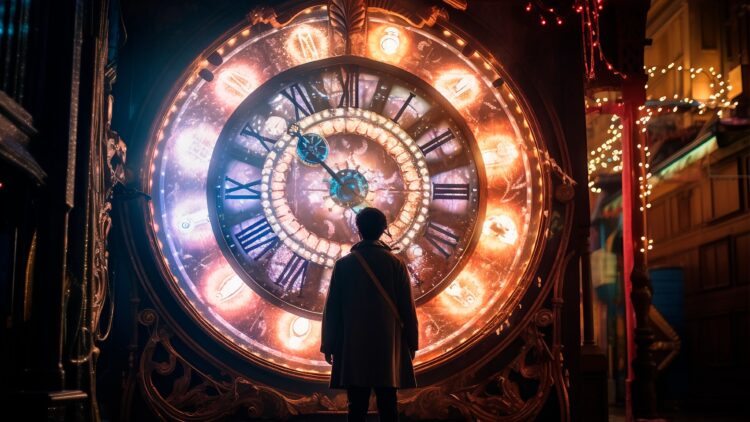Time travel is a cherished trope of science fiction, sparking imaginations and fueling countless stories. However, groundbreaking discoveries in quantum physics may be blurring the lines between fiction and reality. A team of physicists from the University of Toronto in Ontario, Canada, has presented evidence of a “negative time” phenomenon, hinting at the possibility of a new understanding of time itself.
What exactly is “negative time”?
The concept of “negative time” emerged from a recent series of intricate experiments focused on photons—the fundamental particles of light. The research team found that under specific conditions, photons could appear to exit a material before they actually enter it.
“The results suggest that negative values taken by rimes such as the group delay have more physical significance than has generally been appreciated,” the team stated in their study, which is awaiting peer review.
Aephraim Steinberg, a professor at the University of Toronto, remarked on the surprising nature of these findings: “It took a positive amount of time, but our experiment observing that photons can make atoms seem to spend a negative amount of time in the excited state is up!”
The unexpected outcomes of quantum physics experiments
The path to this discovery began several years ago when researchers, led by Daniela Angulo, aimed to delve into atomic excitation, a phenomenon where photons interacting with atoms elevate them to a higher energy state.
Following extensive experimentation involving ultracold rubidium atoms, the team observed that photons could leave the atoms almost immediately after being absorbed, leading them to conclude that certain photons spent a negative duration in the excited state.
To visualize this phenomenon, Steinberg likened it to cars entering a tunnel, where the first ones might exit slightly before the last ones enter. This analogy helps to contextualize the notion of negative time, which had previously been regarded as nonsensical.
The findings are stirring considerable debate among scientists. While some argue that the negative time observed does not relate to actual time travel or a backward progression of time, the team insists that their results challenge established understandings of light behavior.
“We don’t want to say anything traveled backward in time,” Steinberg clarified. “That’s a misinterpretation.”
What does the future of negative time look like?
The team emphasizes that their discoveries don’t contradict Albert Einstein’s theory of relativity, which states that nothing can travel faster than light. The photons involved transmitted no information, thus sidestepping any cosmic speed restrictions.
Josiah Sinclair, another team member, elaborates, “A negative time delay may seem paradoxical, but what it means is that if you built a ‘quantum’ clock to measure how much time atoms are spending in the excited state, the clock hand would, under certain circumstances, move backward rather than forward.”
Captivating though these findings may be, Steinberg and Angulo urge caution in interpreting their implications. They recognize that while the concept of negative time prompts questions in quantum mechanics, it doesn’t necessarily pave the way for practical time travel.
The research into negative time opens new possibilities for exploring quantum phenomena and challenges existing theories of light and time. As the scientific community continues to scrutinize these results, one thing is clear: the quantum realm remains a frontier of extraordinary discoveries and mysteries.
Although the notion of time travel still resides in the realm of fiction, the team’s findings on negative time challenge our understanding of time itself. They provoke excitement and skepticism, potentially altering how we think about the behavior of light and the fabric of reality. As physicists delve deeper into these quantum enigmas, we can only imagine what other revelations might emerge.

